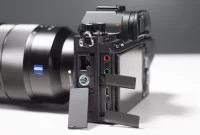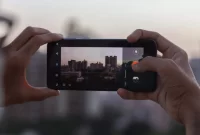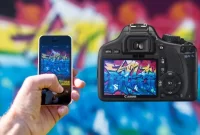In today’s digital era, the debate between using a camera or a smartphone for capturing images continues. This article delves into the comparison between these two devices, focusing specifically on their image quality. From sharpness to color accuracy, find out which device reigns supreme in the realm of capturing stunning visuals.
Differences in Sensor Size and Resolution
When comparing the image quality of a camera and a smartphone, one important factor to consider is the differences in sensor size and resolution.
A camera typically has a larger sensor size compared to a smartphone. The bigger the sensor, the more light it can capture, resulting in better image quality, especially in low-light conditions. This is because a larger sensor allows for greater detail, less noise, and improved dynamic range.
On the other hand, smartphones generally have smaller sensors due to their compact size. While smartphone camera technology has advanced significantly, it still may struggle to match the image quality of a dedicated camera.
Resolution is another factor to consider. Cameras often offer higher resolution options, allowing for more detailed and sharper images. This is particularly beneficial for those who want to print their photos or engage in professional photography.
Smartphones, however, may have lower resolution sensors but compensate for it by utilizing sophisticated image processing software and computational photography techniques. These advancements can result in impressive image quality in different lighting conditions.
In conclusion, while smartphones have become increasingly capable of capturing high-quality images, dedicated cameras still hold an advantage when it comes to sensor size and resolution. If image quality is of paramount importance, investing in a camera may be the better choice.
Optical Zoom vs. Digital Zoom
When it comes to capturing images, the choice between a camera and a smartphone is often debated. One of the key factors that distinguishes the two is the zoom capability. In this article, we will compare optical zoom and digital zoom to understand their impact on image quality.
Optical Zoom
Optical zoom is a feature found in most digital cameras. It works by adjusting the lens to bring the subject closer, resulting in a magnified image. The advantage of optical zoom is that it maintains the image quality even when zooming in. This is because the lens physically moves, gathering more detail without sacrificing resolution.
Digital Zoom
On the other hand, digital zoom is a software-based feature commonly found in smartphones. It digitally enlarges a portion of the image, essentially cropping and stretching it to create the illusion of zoom. Unlike optical zoom, digital zoom can result in a noticeable loss of image quality. This is because it does not capture more detail but simply enlarges the existing pixels, leading to pixelation and decreased sharpness.
Image Quality Comparison
When comparing the image quality of optical zoom and digital zoom, it is clear that optical zoom comes out on top. The ability to physically zoom in allows for capturing more details, maintaining sharpness, and preserving image clarity. Digital zoom, however, struggles to maintain the same level of quality and often produces images that appear pixelated and less defined.
It is worth noting that not all cameras and smartphones are created equal. Some smartphone manufacturers have improved the quality of their digital zoom through advanced algorithms and multiple lenses. However, even with these advancements, optical zoom still offers superior image quality.
Conclusion
In conclusion, when it comes to image quality, there is a clear distinction between optical zoom and digital zoom. Optical zoom, found in digital cameras, allows for maintaining image quality even when zooming in. On the other hand, digital zoom, commonly found in smartphones, can result in a loss of image quality due to pixelation and decreased sharpness. As technology continues to advance, there may be improvements in digital zoom, but for now, optical zoom remains the preferred choice for those seeking high-quality images.
Low-light Performance and Noise
When it comes to capturing images in low-light conditions, the difference between a camera and a smartphone becomes evident. Cameras are designed with larger sensors and better low-light performance capabilities, allowing them to excel in challenging lighting situations. This is mainly due to the ability of cameras to capture more light, resulting in brighter and clearer images.
Smartphones, on the other hand, usually have smaller sensors that struggle to capture sufficient light in low-light environments. As a result, images taken with a smartphone in such conditions tend to appear grainy and noisy.
Camera manufacturers have invested heavily in advanced technology to combat noise in low-light situations. They have developed sophisticated noise reduction algorithms that help minimize the unwanted grainy appearance, producing cleaner and more vibrant images.
However, smartphone manufacturers are constantly improving the low-light capabilities of their devices. Some smartphones now come equipped with features like larger pixels, optical image stabilization, and AI-powered night modes to enhance low-light performance and reduce noise.
In conclusion, while cameras still hold an advantage over smartphones in terms of low-light performance and noise reduction, smartphones are rapidly catching up. The gap between the two continues to narrow as smartphone technology evolves.
Post-processing Capabilities
When it comes to image quality, one important factor to consider is the post-processing capabilities of cameras and smartphones.
Cameras, especially professional DSLRs, offer extensive post-processing options. These cameras often come with advanced features such as shooting in RAW format, which allows photographers to have more control over the final image. With RAW files, photographers can adjust various aspects like exposure, contrast, white balance, and noise reduction.
Additionally, cameras have dedicated software like Adobe Lightroom and Capture One, which provide powerful editing tools for enhancing images further. These tools have features like selective editing, advanced color grading, and lens correction, giving photographers the ability to achieve their desired results.
Smartphones, on the other hand, have come a long way in terms of post-processing capabilities. Most smartphones now offer built-in editing tools that allow users to make basic adjustments like cropping, exposure, and saturation. Some smartphones even have artificial intelligence algorithms that automatically enhance the image, improving colors and sharpness.
Furthermore, there are numerous photo editing apps available for smartphones, offering a wide range of creative filters, effects, and editing features. These apps enable users to easily enhance and personalize their photos directly on their devices.
In summary, both cameras and smartphones have their own strengths when it comes to post-processing capabilities. Cameras offer extensive options for professional photographers, while smartphones provide convenient and user-friendly editing tools for everyday users. Ultimately, the choice between the two depends on the individual’s needs, preferences, and level of expertise in image editing.
Conclusion
In conclusion, while smartphones have made significant advancements in camera technology, dedicated cameras still excel in terms of image quality. The larger sensors, better lenses, and manual control options allow cameras to capture more details and produce higher-quality images. However, smartphones offer convenience and accessibility, making them a popular choice for casual photography. Ultimately, the choice between a camera and a smartphone depends on the user’s priorities and needs.




